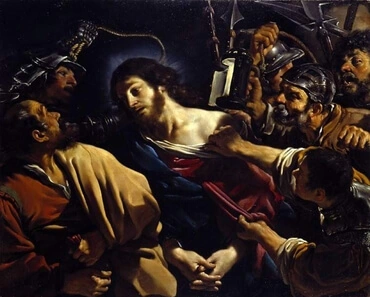Explanation of John 1:10
By Brian David

The beginning of John 1 illustrated how divine truth – which is the ultimate expression of the Lord’s love – is the actual creative force of the universe and of reality itself. That idea is reinforced here: "him" refers to Jesus, who was the physical embodiment of divine truth, which indeed made the world.
This verse offers another level, though. "World" represents the church, which is defined in the Writings as "where the Lord is known and where the Word is." By that definition a "church" can be as small as one person, or as large as billions of people worshiping through a wide variety of denominations. And the Writings tell us that the Lord has made sure that such a church always existed, from prehistoric times when the Lord offered "the Word" – His truth – to people directly up through today, when we have the Word in the form of the Bible.
But the world did not know him. At the time the Lord came among us as Jesus, people had turned away from the deeper meanings of the Word (which they then had in the form of the Old Testament), and had little to no concern for knowing the Lord. His church – the church among the Children of Israel – had turned away.
This might seem like a merely historic idea, something that happened then but has little to do with us now. But each one of us is a "church," and each one of us can know the Lord and the Word, or turn away. We all go through states when we are like the church at the time the Lord was born, and He can rebuild us now even as He rebuilt the church then. For that to happen, though, we need to turn to the Word – the Bible – and know the Lord.
(References: Apocalypse Explained 1093; Canons of the New Church 9; The Apocalypse Explained 294 [16])
Arcana Coelestia #1510
1510. Every spirit has his own sphere, and every community of spirits even more so, which emanates from the assumptions and the persuasions he has adopted. This sphere is that of his assumptions and persuasions. Evil genii possess a sphere of evil desires. The sphere of assumptions and persuasions is such that when it acts on another person it causes truths to be as falsities, and stirs up all things which are of a confirmatory nature, so as to induce a belief that falsities are truths, and that evils are goods.
[2] This has made clear to me how easily a person can be confirmed in falsities and evils if he does not believe in the truths which come from the Lord. The density of such spheres depends on the nature of the falsities that are present; and those spheres cannot possibly coexist with the spheres of spirits who abide by truths. If those spheres draw near, a repugnance arises; and if, because it is permitted to do so, the sphere of falsity prevails, the good enter into temptation and into distress. I have also perceived the sphere of disbelief, which is such that those to whom it belongs do not believe anything they are told, and scarcely believe that which they are given to see with their eyes. There is also the sphere of those who believe nothing apart from what they apprehend with the senses.
[3] I also once saw a certain spirit dressed in black who was sitting at a mill and, it seemed, was grinding flour. To the side of him I saw little mirrors. Subsequently I saw some things which were the product of delusion but which were airy. I wondered who he was, but he came to me and said that it was he who had been seated at the mill, and that he possessed such ideas as that every single thing was the product merely of delusion and that nothing was real, on account of which, he added, he had become what he was.






